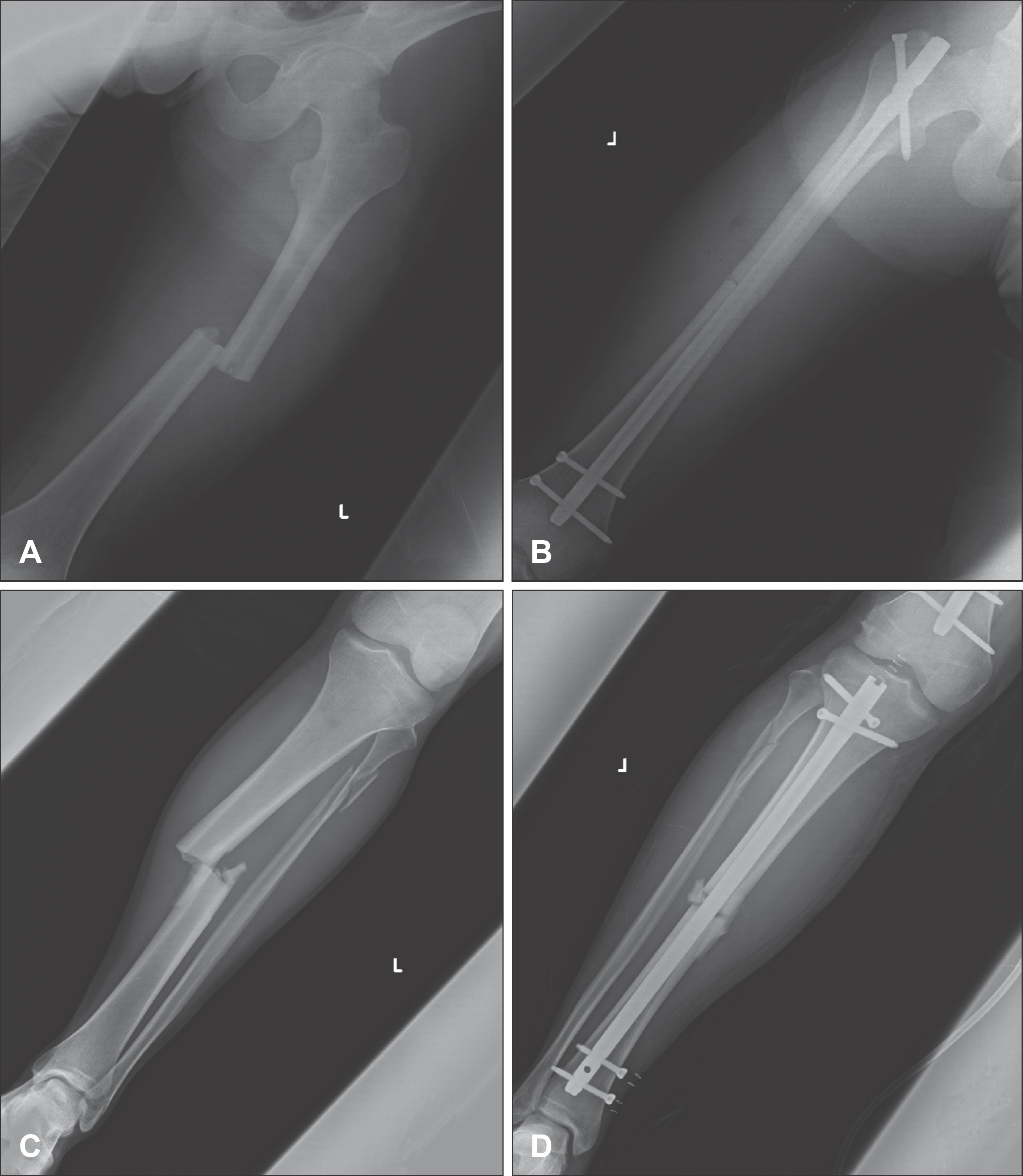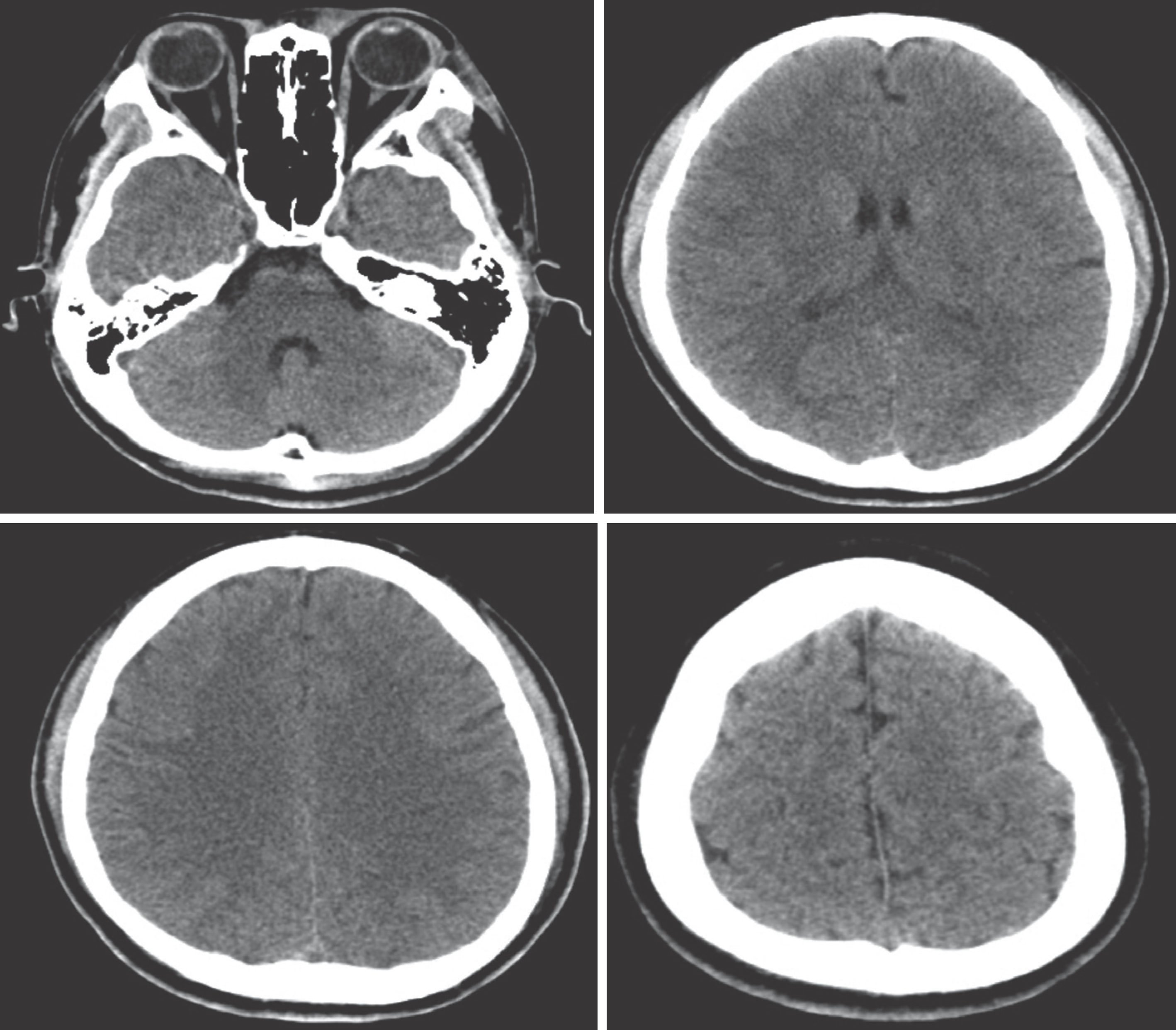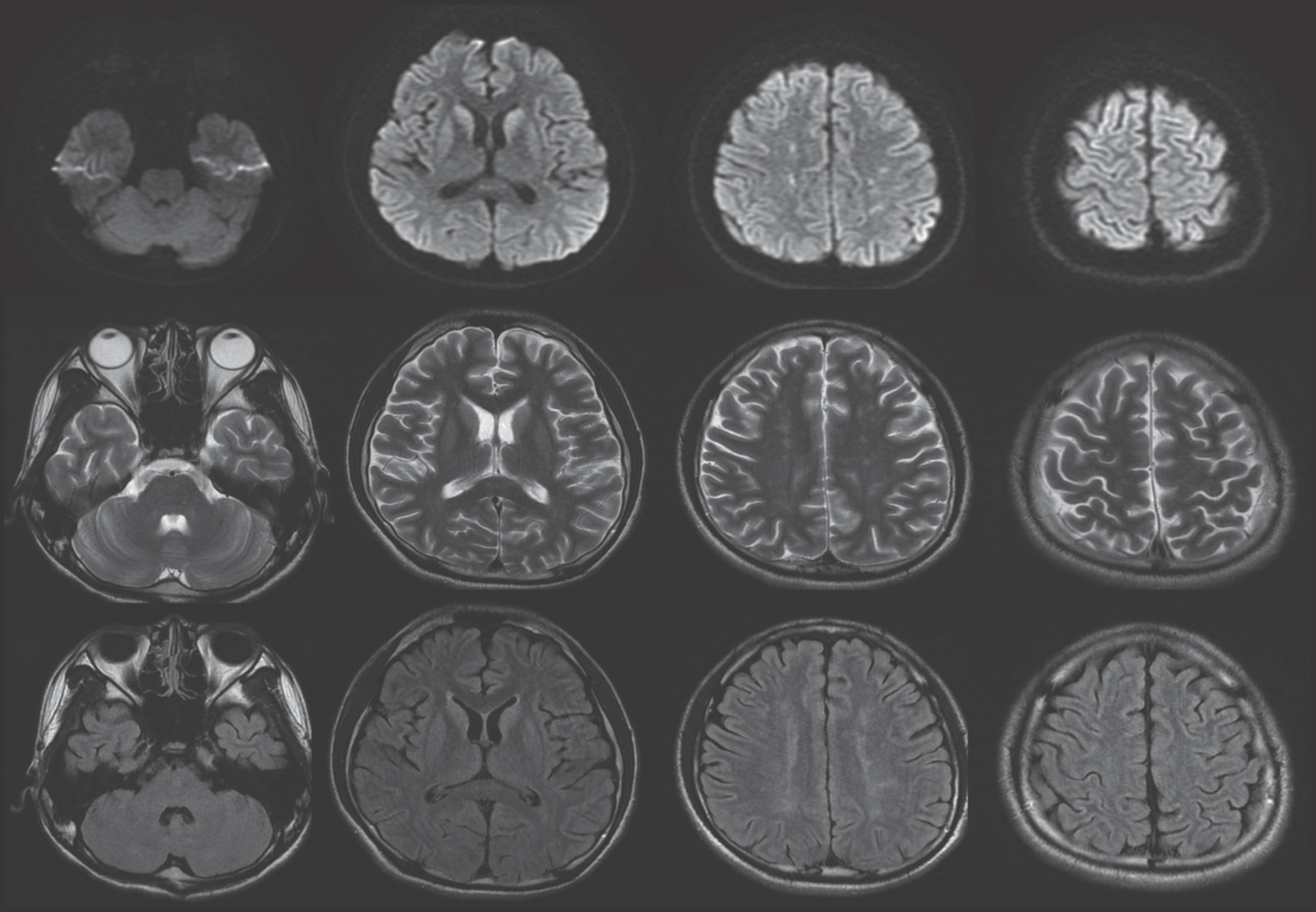Abstract
We are to report a case of cerebral fat embolism for presenting with unconsciousness without any respiratory dysfunction after intramedullary nailing for femur and tibia fractures. A sixteen-year-old boy was involved in motorcycle accident. His consciousness was alert. He had closed shaft fractures of left femur and left tibia and underwent standard femoral and tibial nail insertions. During the operation, there was no change of vital signs and saturation of oxygen. The consciousness was stuporous after the surgery. The brain CT was normal, but multiple high-signal intensity lesions in T2-weighted and diffusion-weighted images were found at bilateral cerebral hemispheres, corpus callosum, and pons. He woke up on postoperative day 12 and recovered to speak fluently without any neurological deficits at 3 months later. MR image should be recommended if the patient is not neurologically stable after the surgery for lone-bone fractures.
Go to : 
References
2. Butteriss DJ, Mahad D, Soh C, Walls T, Weir D, Birchall D. Reversible cytotoxic cerebral edema in cerebral fat embolism. AJNR Am J Neuroradiol. 27:620–623. 2006.
3. Chang RN, Kim JH, Lee H, Baik HJ, Chung RK, Kim CH, et al. Cerebral fat embolism after bilateral total knee replacement arthroplasty -A case report–. Korean J Anesthesiol 59 Suppl:S207-S210. 2010.

4. Fabian TC. Unravelling the fat embolism syndrome. N Engl J Med. 329:961–963. 1993.
5. Kim HH, Park YC, Lee DK, Park CY, Kim JH, Kim YD, et al. Cerebral fat embolism after traumatic multiple fracture: a case report. J Trauma Inj. 26:58–62. 2013.
6. Kim HJ, Lee CH, Kim HG, Lee SD, Son SM, Kim YW, et al. Reversible MR changes in the cat brain after cerebral fat embolism induced by triolein emulsion. AJNR Am J Neuroradiol. 25:958–963. 2004.
7. Kim HJ, Lee CH, Lee SH, Moon TY. Magnetic resonance imaging and histologic findings of experimental cerebral fat embolism. Invest Radiol. 38:625–634. 2003.

8. Kim HJ, Lee JH, Lee CH, Lee SH, Moon TY, Cho BM, et al. Experimental cerebral fat embolism: embolic effects of triolein and oleic acid depicted by MR imaging and electron microscopy. AJNR Am J Neuroradiol. 23:1516–1523. 2002.
9. Lee J. Gradient-echo MRI in defining the severity of cerebral fat embolism. J Clin Neurol. 4:164–166. 2008.

10. Lee SC, Yoon JY, Nam CH, Kim TK, Jung KA, Lee DW. Cerebral fat embolism syndrome after simultaneous bilateral total knee arthroplasty: a case series. J Arthroplasty. 27:409–414. 2012.
11. Lee YS, Park SH, Hamm IS. Cerebral fat embolism with multiple rib and thoracic spinal fractures. J Korean Neurosurg Soc. 36:408–411. 2004.
12. Lozman J, Deno DC, Feustel PJ, Newell JC, Stratton HH, Se-dransk N, et al. Pulmonary and cardiovascular consequences of immediate fixation or conservative management of long-bone fractures. Arch Surg. 121:992–999. 1986.

13. Müller C, Rahn BA, Pfister U, Meinig RP. The incidence, pathogenesis, diagnosis, and treatment of fat embolism. Orthop Rev. 23:107–117. 1994.
14. Parizel PM, Demey HE, Veeckmans G, Verstreken F, Cras P, Jo-rens PG, et al. Early diagnosis of cerebral fat embolism syndrome by diffusion-weighted MRI (starfield pattern). Stroke. 32:2942–2944. 2001.

15. Ryu CW, Lee DH, Kim TK, Kim SJ, Kim HS, Lee JH, et al. Cerebral fat embolism: diffusion-weighted magnetic resonance imaging findings. Acta Radiol. 46:528–533. 2005.

16. Simon AD, Ulmer JL, Strottmann JM. Contrast-enhanced MR imaging of cerebral fat embolism: case report and review of the literature. AJNR Am J Neuroradiol. 24:97–101. 2003.
17. Takahashi M, Suzuki R, Osakabe Y, Asai JI, Miyo T, Nagashima G, et al. Magnetic resonance imaging findings in cerebral fat embolism: correlation with clinical manifestations. J Trauma. 46:324–327. 1999.
Go to : 
 | FIGURE 1.Simple radiographs of the left leg. Shaft fracture and dislocation (A) and postoperative intramedullary nailing (B) on the left femur. Left tibial and fibular fractures (C) and intramedullary nailing on the tibia (D). |
 | FIGURE 2.Computed tomography immediate after the orthopedic surgery. No abnormal density was visualized in the brain parenchyme. |
 | FIGURE 3.Magnetic resonance images at the postoperative 3rd day. Multiple high signal abnormalities in the pons, the splenium of the corpus callosum, the periventricular deep white matter, and the cerebral cortex on the diffusion-weighted images (top row), T2-weighted images (second row), and fluid attenuated inversion recovery images (third row). The abnormalities were not definitely visualized on the T1-weighted images (bottom row). |
 | FIGURE 4.Follow-up magnetic resonance images at the postoperative 20th day. The multiple abnormal signals on the diffusion-weighted images (top row), T2-weighted images (middle row), and fluid attenuated inversion recovery images (bottom row) mostly disappeared. There was no cystic degeneration resulting from the cerebral infarct. |




 PDF
PDF ePub
ePub Citation
Citation Print
Print


 XML Download
XML Download